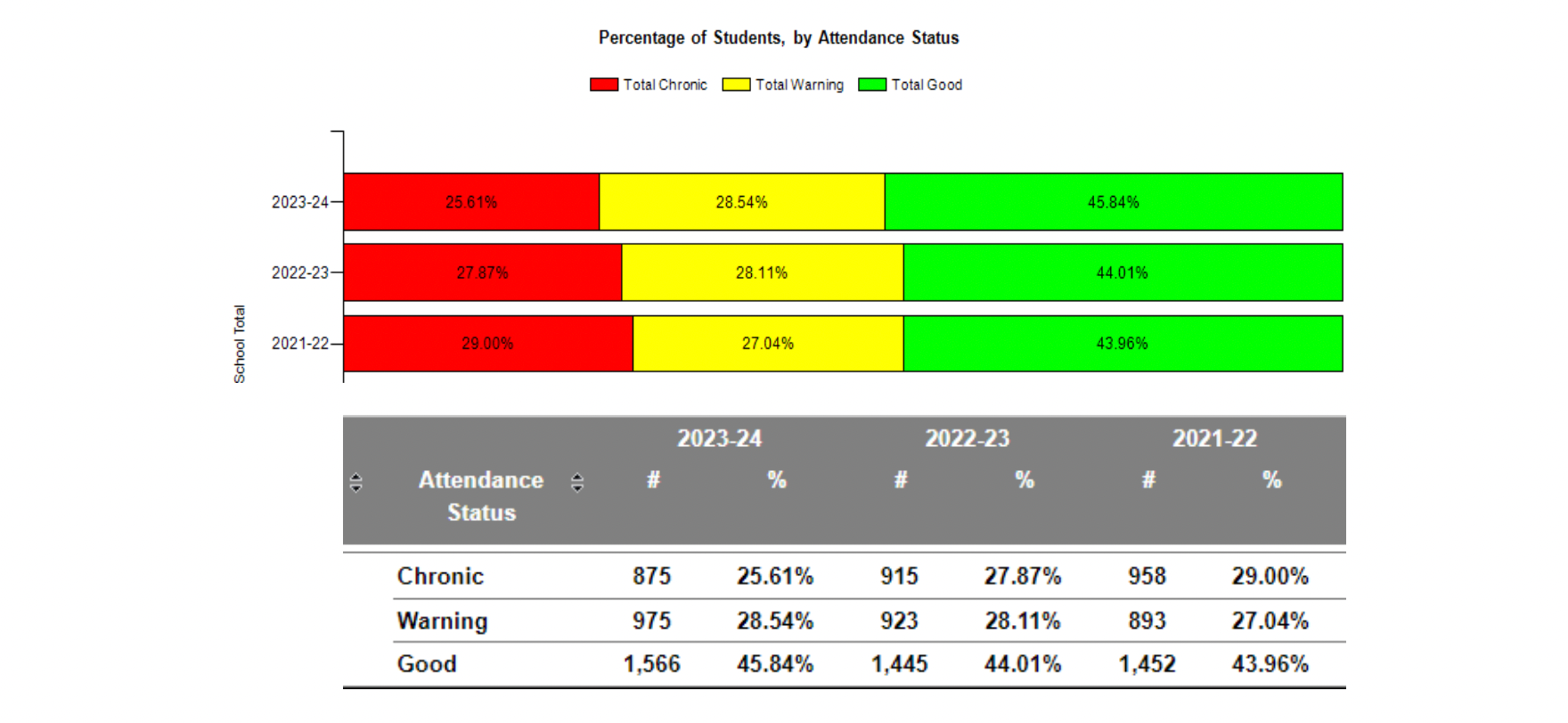Simplified: A targeted effort to help more kids get to school has seen some early wins in the Sioux Falls School District, according to data presented to the school board Monday.
Why it matters
- The district received a three-year, $1.5 million grant last year to address chronic absenteeism – defined as kids who miss 10% of school days or more. Grant funding specifically targeted four subgroups of students: homeless, economically disadvantaged, Hispanic and Native American.
- Data from the first year showed that the best way to help reduce absenteeism was personal connection – whether it was a phone call, a home visit, a bus pass, a ride to school or getting a kid an alarm clock.
- The good news is, it appears to be working. The six targeted schools saw improved attendance rates – with one school seeing one of the largest increases in attendance rates in decades.
- The trickier news, though, is that because of the hands-on nature of the work, it's unlikely something that could be picked up by existing district staff once the grant funding runs out.
"These next two years are going to go very quickly," Superintendent Jane Stavem said. "And in about a year and a half, this board will have decisions related to budget to figure out how we can continue to fill that gap."
Tell me more
The grant funded six attendance liaisons, one at each targeted school, including:
- George McGovern Middle School,
- Whittier Middle School,
- Garfield Elementary,
- Hawthorne Elementary,
- Hayward Elementary,
- and Terry Redlin Elementary.
These liaisons made calls, sent texts, mailed letters, and helped coordinate incentives like "Flyboy Fridays" and "Lunch with a firefighter."
- In total, the attendance liaisons made about 7,000 unique contacts throughout the school year.
How big of a difference did it make?
With a lot of things in the world of education, progress is slow and steady. But last year there were about 80 fewer chronically absent students than there were two years prior – as well as about 114 more kids with "good" attendance.
Here's a visual of the last few years of attendance data from the district:

There's also the anecdotal evidence of the program's success.
- Assistant Superintendent Jamie Nold shared the example of a student who two years ago missed 94 days of school – more than half the academic year. Last year, with the help of personal connections to their attendance liaison, that student missed only 15 school days.
What happens next?
In the second year of the grant, the district is going to lean into marketing the message "I show up" with the help of interns at local ad agency ClickRain.
The district will continue to have the six liaisons at their respective schools and the same priorities to reduce the number of kids missing a significant amount of school.
Then, when funding runs out in another two years, it'll be up to school board members to decide if and how to fund these jobs moving forward.


